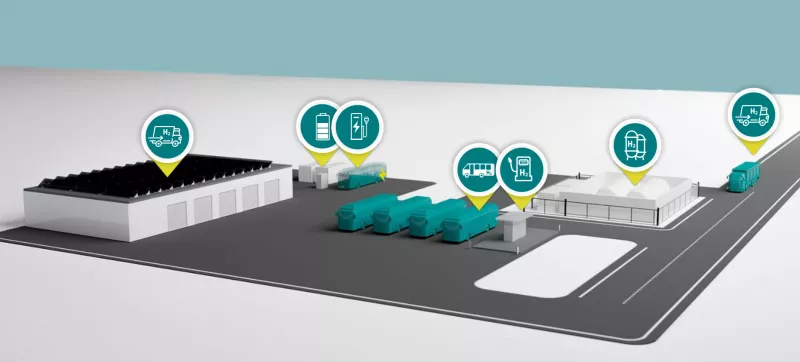German renewable energy company Energiequelle has received planning consent for its first public green hydrogen project in Finland—the Oulu Green Hydrogen Park. Located in Oulu, approximately 600 km north of Helsinki, the project represents a significant step in Finland’s and Europe’s green energy transition.
Project Phases and Expansion Potential
The first phase of the project includes the development of a 5 MW hydrogen production plant and a hydrogen refueling station for buses and heavy-duty vehicles. Subject to favorable market conditions, this phase is expected to be operational by 2028.
“This planning approval is a key milestone, but it’s only the beginning,” said Karl Schultheis, Head of New Business Development at Energiequelle Finland. “This is a major industrial investment, and we’re committed to carrying out detailed planning and feasibility studies before making final investment decisions.”
In subsequent phases, production capacity could be expanded to 10–50 MW, with potential for hydrogen exports through a planned pipeline and the port of Oulu. A third phase could see capacity grow by an additional 100–500 MW, depending on infrastructure availability and market dynamics.
Oulu’s Emerging Hydrogen Cluster
The City of Oulu has designated the project site for three separate hydrogen projects with a combined maximum capacity of 1,500 MW, aiming to establish the region as a national and European hydrogen hub.
“Oulu’s decision to cluster multiple hydrogen producers in one location is a forward-thinking move,” said Nils Borstelmann, Managing Director of Energiequelle Finland. “This fosters a stable, predictable investment environment and supports the development of critical hydrogen transmission infrastructure.”
Proven Model and German Expertise
While the Oulu Green Hydrogen Park is Energiequelle’s first hydrogen project in Finland, the company brings extensive experience from similar developments in Germany. Earlier this year, it launched the HY.City.Bremerhaven project, a green hydrogen facility with a refueling station for heavy vehicles, inaugurated by German Chancellor Olaf Scholz.
“The Bremerhaven model mirrors our vision for Oulu,” said Michael Raschemann, owner of the Energiequelle Group. “Our success in Germany gives us confidence that we can replicate and scale this model in Finland—if the investment environment aligns.”
Finland’s Strategic Position in Europe’s Hydrogen Economy
Energiequelle sees Finland as a natural energy partner for Germany and Europe. With 95% of its electricity already emission-free and a track record of market-based wind and solar development, Finland is uniquely positioned to supply affordable and clean hydrogen.
“Finland’s hydrogen strategy targets 10% of the EU’s total green hydrogen production,” said Schultheis. “Germany, meanwhile, is expected to import 45–90 TWh of hydrogen and derivatives by 2030. This makes Finland and Germany ideal energy partners.”
Enabling Infrastructure: Hydrogen Corridors Underway
The Finnish transmission operator Gasgrid Finland is currently developing key hydrogen infrastructure projects, all of which received EU funding in January 2025. These include:
-
Nordic-Baltic Hydrogen Corridor (linking Finland to the Baltics, Poland, and Germany)
-
Nordic Hydrogen Route (connecting Finland and Sweden along the Bothnian Bay)
-
Baltic Sea Hydrogen Collector (an offshore hydrogen pipeline project)
These initiatives aim to make Finland a gateway for clean hydrogen and electricity in the Baltic Sea region, offering attractive conditions for domestic and international hydrogen investments.
With approval now in hand, Energiequelle’s Oulu Green Hydrogen Park is poised to become a cornerstone of Finland’s emerging hydrogen economy and a model for cross-border clean energy cooperation in Europe.


